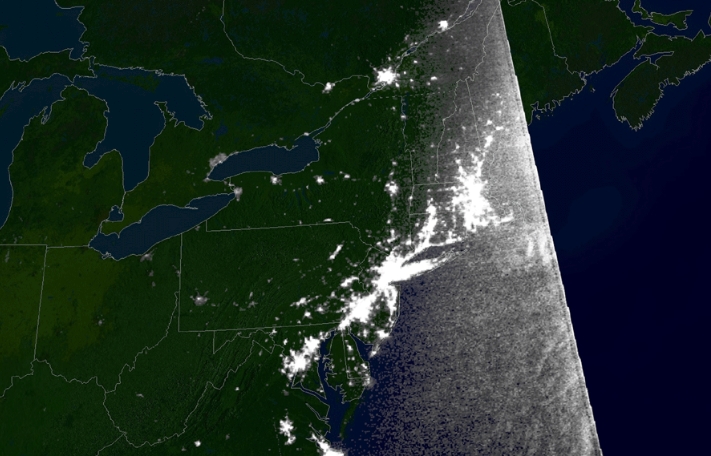 Parler
Parler Gab
Gab
- PJM Interconnection's grid faces capacity crunch amid AI data center boom.
- I servers now consume twice as much power as older models, straining the eastern U.S. grid.
- Retired fossil fuel plants and renewable intermittency worsen reliability risks.
- Capacity auction costs surged to $14.7B, driven by data center electricity demand.
- Watchdog urges data centers to build self-generation to ease grid strain.
The data center boom outpaces grid capacity
The rapid expansion of AI data centers has become a critical factor in the grid’s strain. Advanced AI servers, such as Nvidia’s GB200 model, now consume 120 kilowatts per rack—double the energy of older units. Multiplying these demands across thousands of servers in sprawling facilities has led to a “perfect storm,” pushing the grid past its limits. Loudoun County, Virginia, a global epicenter of data infrastructure, faces particular pressure. Joe Bowring, president of Monitoring Analytics, emphasized the urgency: “There is simply no new capacity to meet new loads. The solution is to make sure that people who want to build data centers are serious enough about it to bring their own generation.”Retired power plants leave gaps as renewables falter
Compounding the issue, 21% of PJM’s existing generating capacity will retire by 2030, driven by federal and state policies favoring decarbonization. While renewables like wind and solar have expanded, their intermittent nature creates reliability risks, especially during peak demand periods. Monday’s capacity auction results, projected to exceed record highs, underscore the grid’s vulnerability: prices rose to $14.7 billion last year, with over $9.4 billion attributed directly to data center demand. The U.S. electric grid was once resilient due to coal and natural gas plants, which provided steady “baseload” power. However, aggressive closures of fossil fuel infrastructure—as part of broader climate initiatives—have left the grid dependent on uneven energy sources.Market instability and the Mid-Atlantic’s grid stir
Political and economic pressures are intensifying. Goldman Sachs recently declared that Mid-Atlantic power prices “finally caught up to AI’s load growth,” while Maryland’s network has become so precarious that state officials warned of rolling blackouts. Pennsylvania’s emergency intervention in June—airdropping generators to stabilize Maryland’s grid—highlighted how interconnected and fragile the system has become. Summer 2025 has brought record-high wholesale power prices in PJM, outpacing even historically pricey markets on the West Coast. Bowring noted that future solutions must align grid expansions with data center development, including fast-tracked permits for facilities that bring their own generation.A crossroads for energy policy and technology
The PJM crisis illustrates the high stakes of balancing innovation with infrastructure. Data centers, vital to AI growth, now face pressure to become energy-independent while regulators scramble to close capacity gaps. If unresolved, shortages could stifle technological progress and inflate consumer costs. As Bowring stressed, the path forward hinges on policymakers, tech firms and grid operators collaborating to ensure reliability without sacrificing progress. With summer’s peak demand still weeks away, the grid’s next test is as much about foresight as it is about survival. Sources for this article include: ZeroHedge.com Bloomberg.com WorldTribune.comBy Finn Heartley // Share
NetChoice asks Supreme Court to halt Mississippi law limiting minors’ access to social media
By Laura Harris // Share
Report: Advanced AI models LIE and DECEIVE to evade detection and oversight
By Ava Grace // Share
Japan’s ambitious leap into ultrathin perovskite solar panels: A new dawn for renewable energy
By Kevin Hughes // Share
Governments continue to obscure COVID-19 vaccine data amid rising concerns over excess deaths
By patricklewis // Share
Tech giant Microsoft backs EXTINCTION with its support of carbon capture programs
By ramontomeydw // Share
Germany to resume arms exports to Israel despite repeated ceasefire violations
By isabelle // Share










